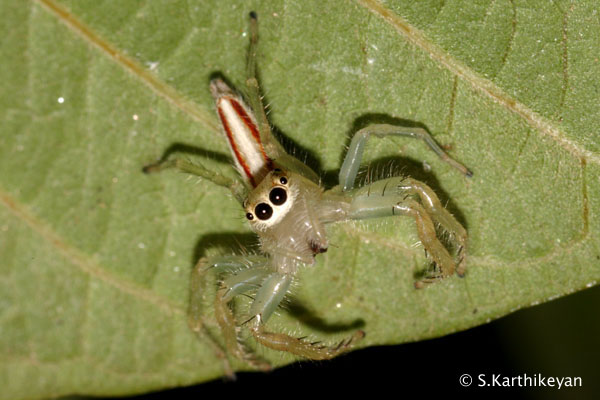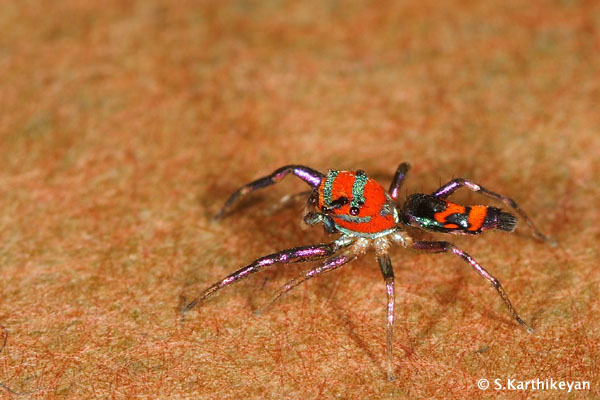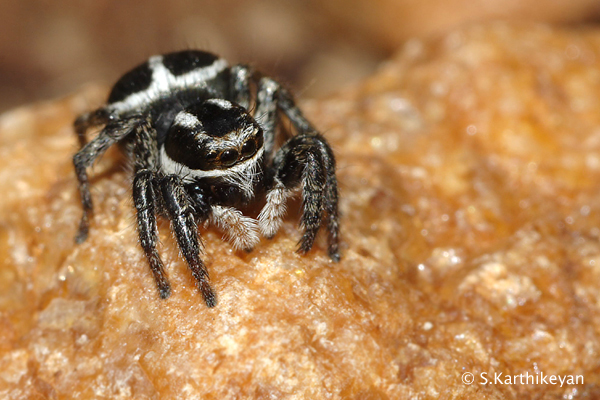Here come the Salticids to herald in the New Year and to give you all a jumpstart into 2010!
Not all spiders build a web and wait patiently to trap their meal! There are some that pounce on their prey and rely on their keen eyesight to catch their prey. These are the jumping spiders.

The jumping spiders are wary of anything that happens in their vicinity. One can observe them respond even to slight movements close to them. The jumping spiders are able to do this due to the four pairs of simple but special eyes they possess. One pair is large, pointing forward, giving it a sharp sight. In fact, at a distance of about one foot, these spiders can distinguish between prey, predator, etc. Alongside is one other pair that is smaller and pointing forward. The other two pairs are placed further behind and are strategically located.
Jumping spiders are active hunters. Once a potential prey (mainly insects) has been identified, they advance slowly and stealthily towards it. When within jumping distance, they jump on the prey and grab it. Before they jump, they secure a strand of silk as a lifeline to the substrate. This way they can crawl up to safety if the jump is a failure!
There are more than 4000 species of jumping spiders in the world with over 180 of them recorded from India. Most of the jumping spiders are small – most measuring under a centimetre. Perhaps, they are among the most colourful of spiders with some of having shining metallic colours.

The arrangement of eyes, their shape, stout bodies, short legs, their behaviour and habits are very characteristic of these spiders. Being such a large and diverse group, it is but natural to find variations in the base plan. For eg. the ant-mimic spider which resemble ants and others which have markings that mimic wasps.

The jumping spiders are solitary like most other spiders. They are fond of sunshine and are active during the day. At nights and on cloudy days, they return to the safety of a silken nest made in crevices, under stones and other such suitable places. They can be seen on trees, amid grass, rocks, and even on walls of our homes. In the environs of our homes they can be seen feeding on flies and other insects!
See more pictures of Jumping Spiders